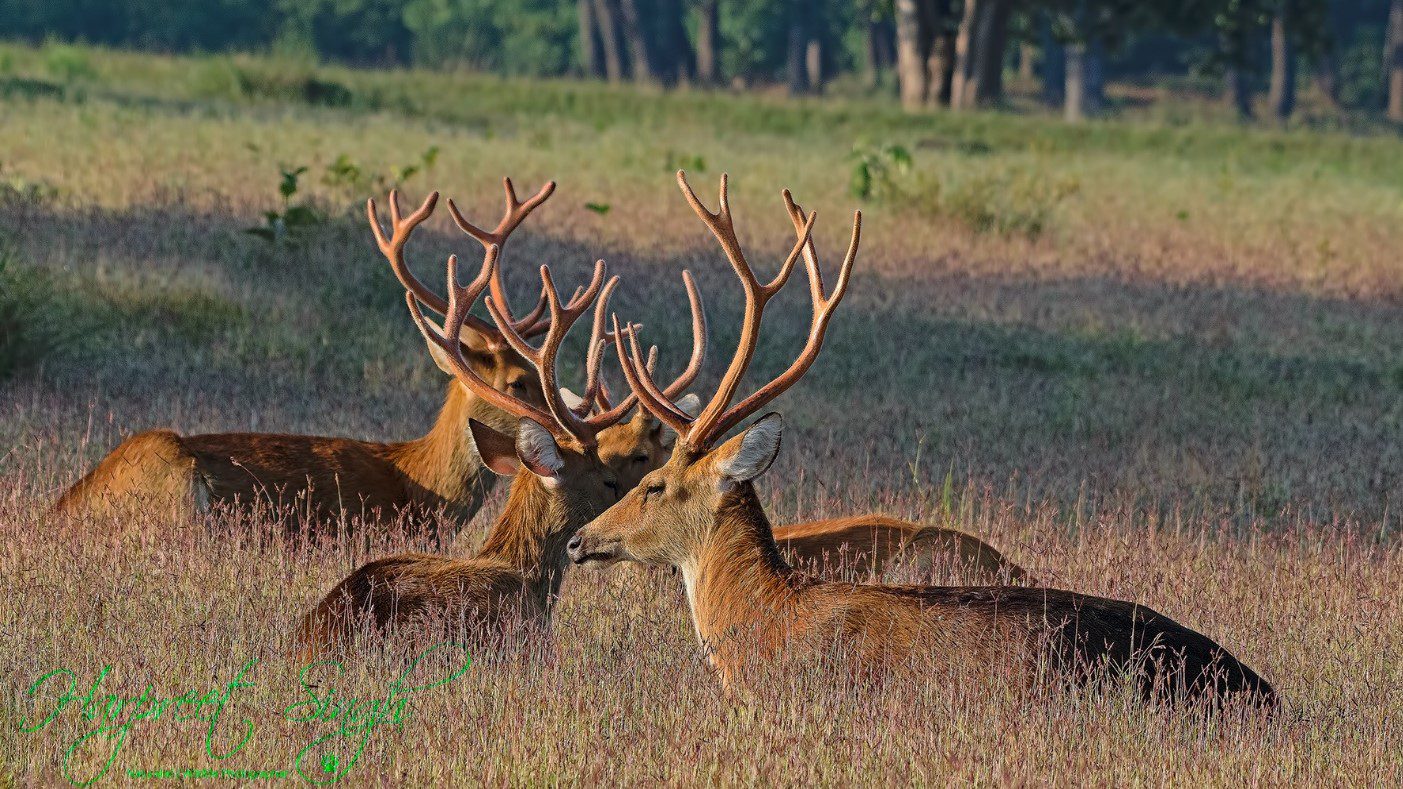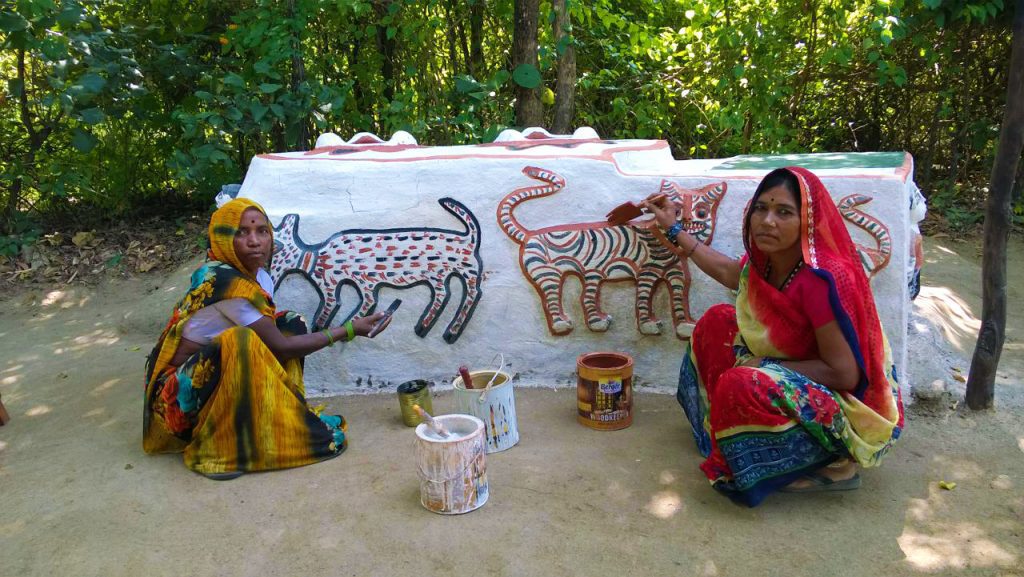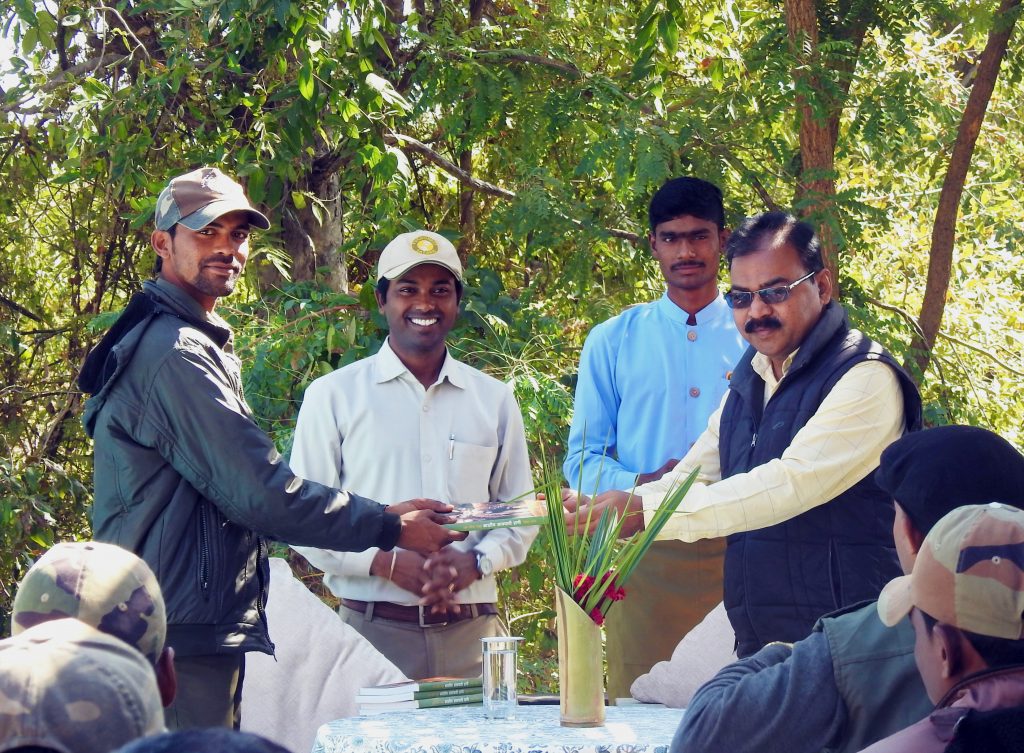Swamp Deer or Barasingha as the name suggests in Hindi is a species of deer that has 12, or more than 12 tined set of antlers. Swamp deer is also known as dolhorina; (dol meaning swamp, horina meaning deer) in Assamese and in Central India, it is called goinjak or gaoni.
Since they have two-toed hooves, Barasingha are a member of family called ‘Artiodactyls’ or ‘even-toed ungulates’. Swamp Deer, like other deer are ruminant ungulates with moist, naked nose and prominent facial glands. Males possess antlers which are solid, branched appendages on the head.
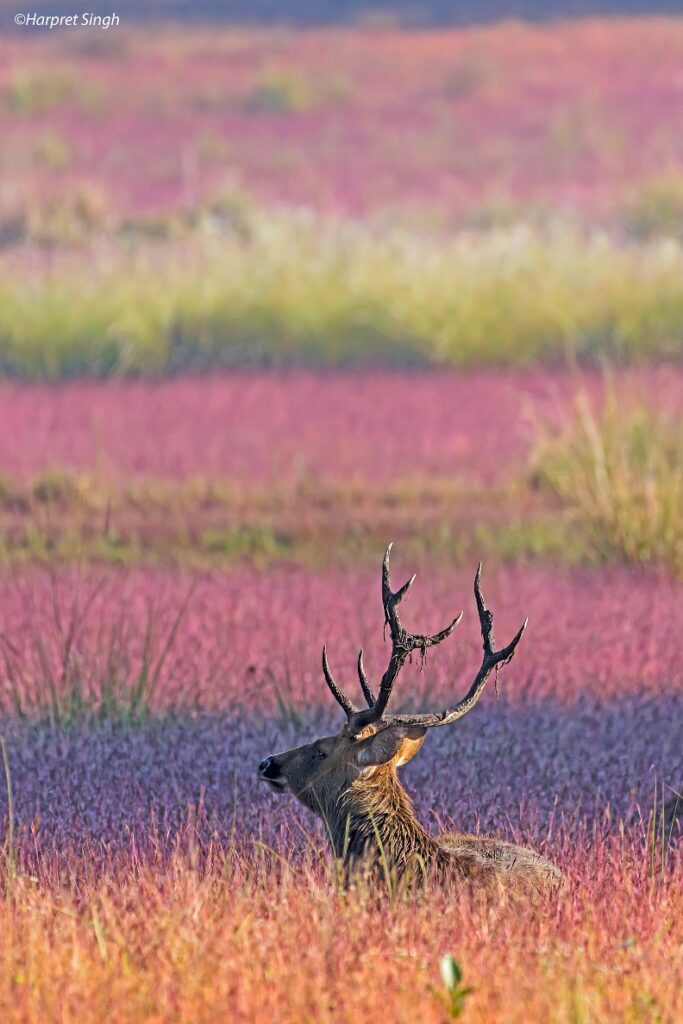
Subspecies of Barasingha in India:
There are three subspecies of Barasingha found in India –
1) Wetland Barasingha (Rucervus duvaucelii duvacelii)
2) Hard-ground Barasingha (Rucervus duvaucelii branderi)
3) Eastern Barasingha (Rucervus duvaucelii ranjitsinhii)
Difference between three sub species of Swamp Deer in India
All the three species of swamp deer vary in dental and cranial features, and a few other features as well.
Eastern Barasingha
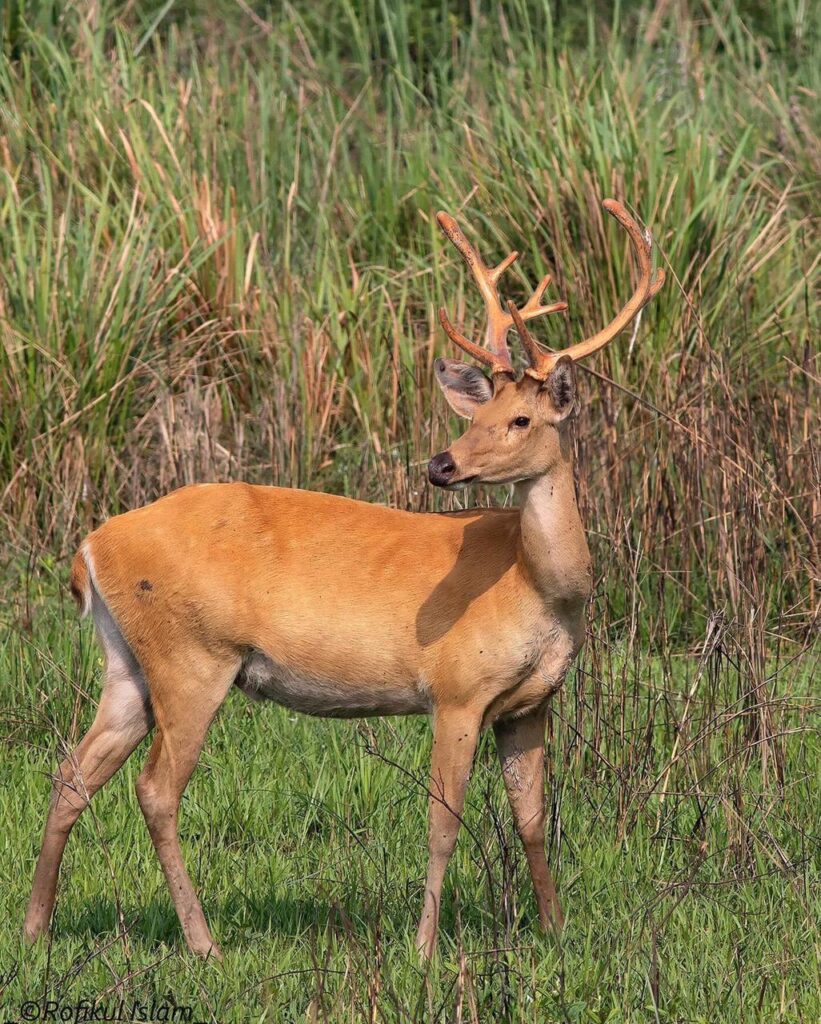
Eastern Barasingha, the smallest of Barasinghas has smaller tail and antlers compared to other sub-species. Large off-white hair on inner side of the ears makes this Barasingha different from other two subspecies. Their antlers have unmistakable branching that lower down to beam. Also, their antlers are flatter and more palmate than other swamp deer. They have a slender face with small and pointed ears.
Best Seen:
Eastern Barasingha prefers tall alluvial grasslands, interspersed with swamps and are found in North-Eastern India especially in Assam. Protected areas such as Kaziranga and Manas home them.
Hard-ground Barasingha
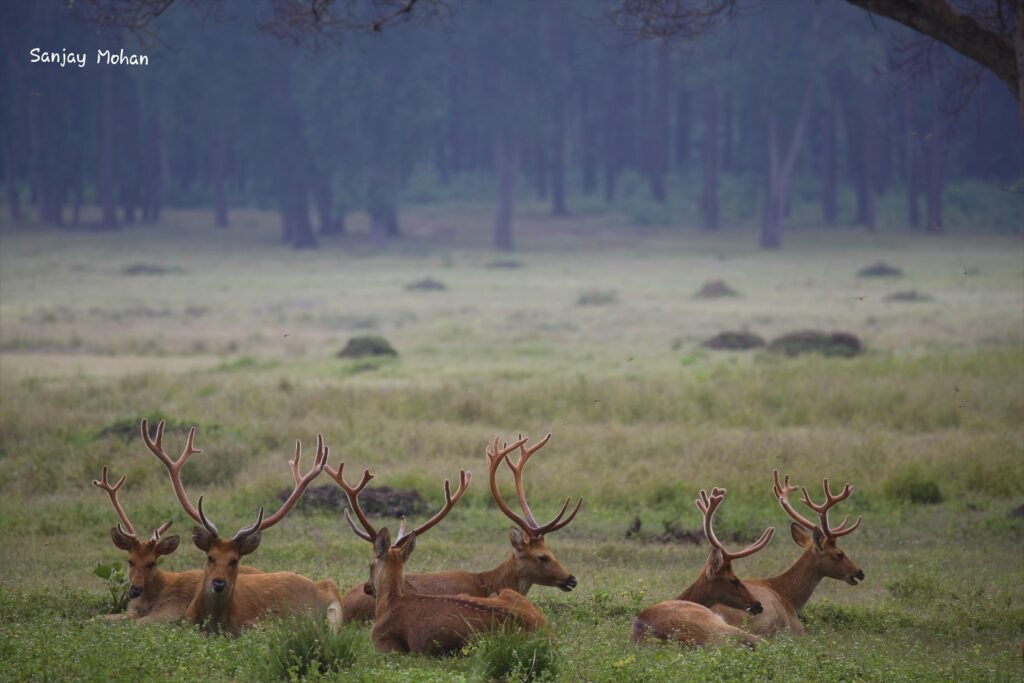
Hard-ground Barasingha is larger than Eastern Barasingha, but smaller than Wetland Barasingha. However, it has longer set of antlers, darker fur coat and a prominent neck ruff. The distinguishing feature of this subspecies is the absence of splayed hooves. Dry grassland bordered by Sal forest are home to the Hard-ground Barasingha.
Best Seen:
Kanha Tiger Reserve is the only place in the wild where Hard-ground Barasingha can be found today. Although, a small population is translocated to Satpura Tiger Reserve towards Bori Wildlife Sanctuary.
Wetland Barasingha in India
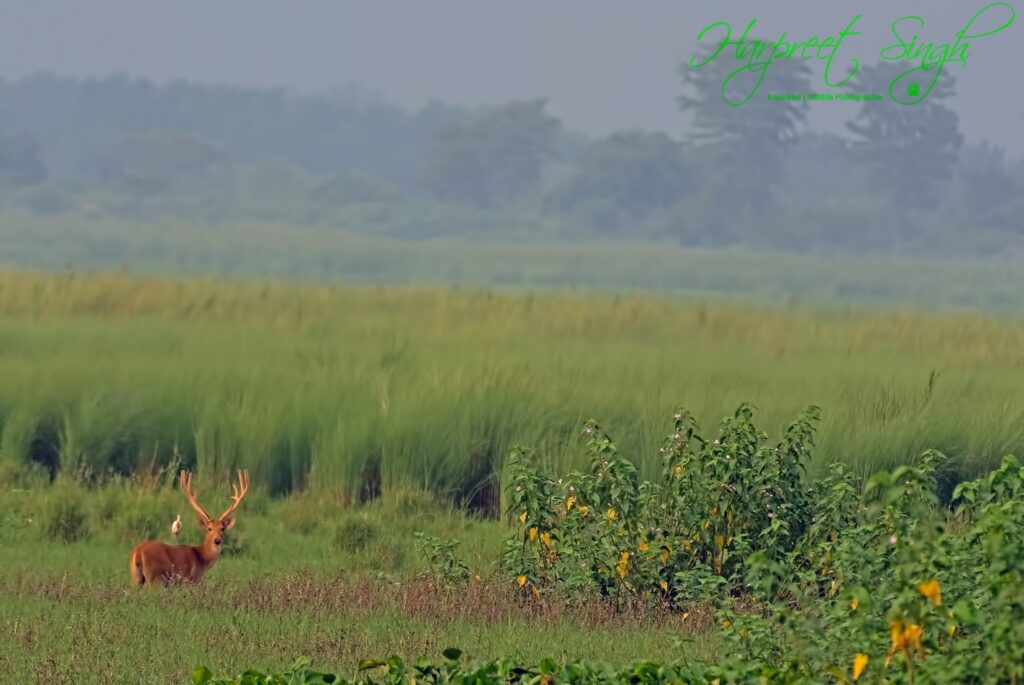
The Wetland Barasingha is the largest among all the swamp deer of India. The tail is longer with a whitish fringe. The hind side of this species is much higher. Wetland Barasingha inhabits flooded tall grasslands of Northern India.
Best Seen:
Wetland Barasingha is best seen at Kishanpur Wilddlife Sanctuary and Dudhwa National Park, Uttar Pradesh. Small numbers are also found in Haiderpur wetland in Uttar Pradesh.
Common difference between Barasingha and Sambhar Deer
The confusion between Sambhar deer and Barasingha is common throughout India. Though they both are from same family of ‘even-toed ungulates’, they are differ from each other.
- The antlers of Barasingha are wide-open, whereas those of Sambhar deer are more curved.
- The fully grown Sambhar deer have 4 to 8 branches on antlers. However, Barasingha have 12 or more branches on their antlers. In both the species, only males have antlers.


Behaviour of Barasingha Deer
Unlike spotted deer, Barasingha do not have vigilant sentries while in herds. They are often seen grazing with their heads down simultaneously.
Deer of habit, they generally use the same track to move around every day. The preferred place of Barasingha to hide is grassland, not the forests.
Barasingha plays a characteristic behaviour of rutting. Stags display and battle each other for breeding access to females. Loud vocalisation and sparring at each other are typical of ruts.
Reproduction in Barasingha Deer
The female swamp deer are monoestrous. Swamp deer generally have a single young one, after about eight months of gestation. The fawns are weaned at around six months, leaving the female ready to breed again in just over a year. Stags achieve puberty when they are 48 months. However, females enters into puberty at the age of 18 to 24 months.
Eastern Barasingha breeds during monsoon which happens during April to August. Wetland Barasingha mate in early winters, October to January; while Hard-ground Barasingha breed from December to February.
Hard-ground Barasingha of Kanha
Hard ground swamp deer is the state animal of Madhya Pradesh. This subspecies of Swamp deer has seen a revival in the Kanha Tiger Reserve, after having been perilously close to extinction for a long time.
In 1967, the numbers of swamp deer decreased to 66 due to rampant hunting, habitat loss and diseases. The number was estimated at around 551 in 1953.
The deer was brought back from the verge of extinction with the help of a successful breeding programs and conservation practices at the Kanha Tiger Reserve.
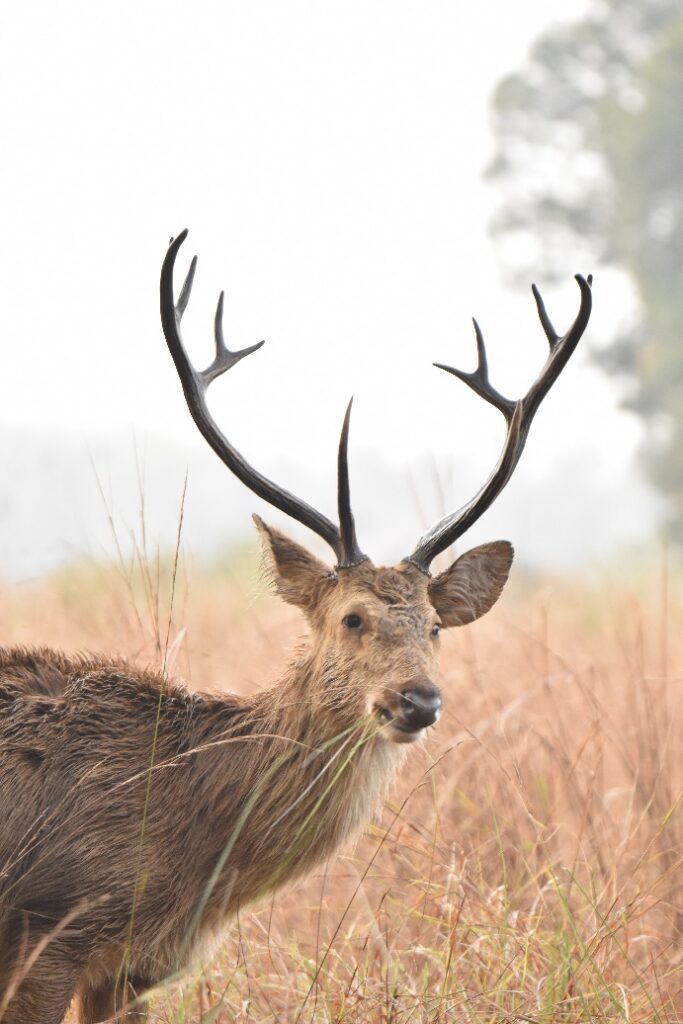
Various conservation methods were used, including habitat improvement and captive breeding that led to an increase in the population to around 450 in 2015, and 800 this year, after five decades of persistent conservation work.
Boma (place where they can dwell safely) enclosures were set up within the Kanha grasslands to revive the numbers of Barasingha. In Boma, regular monitzation and observation of these animals was possible easily. It helped them get used to their surroundings. Once they adapted to the new grasslands, became healthy and could live on their own; they were released into the natural grasslands.
This helped keep them safe and not hunted by predators. In the boma conservation area, the Barasingha numbers increased with healthy newborns. Even today, daily monitoring of Barasingha takes place.
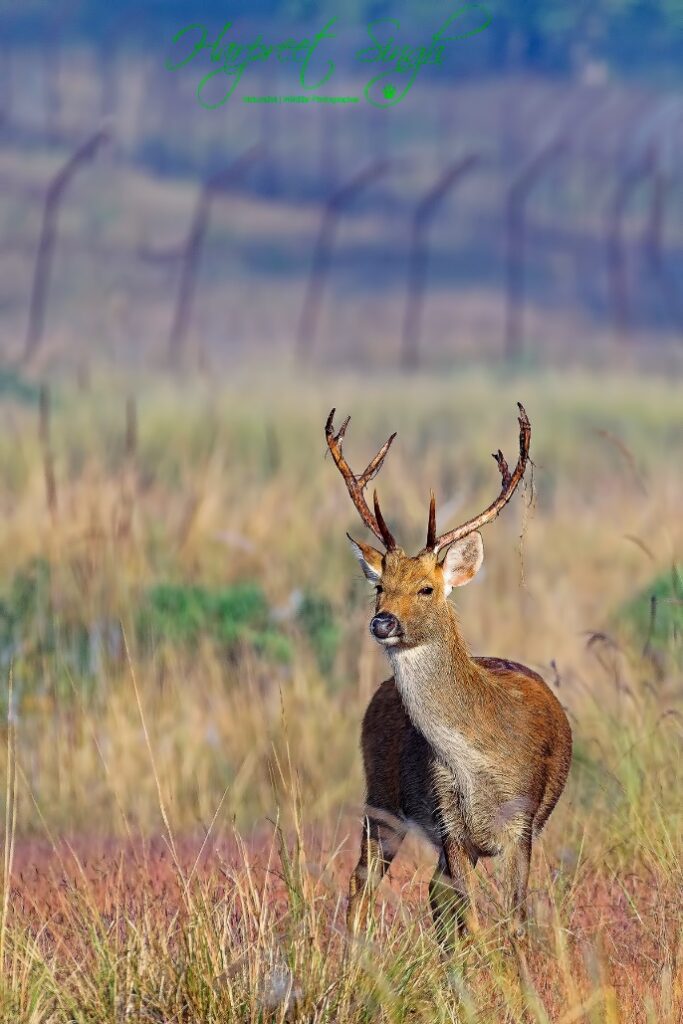
In 2015, swamp deer were also brought to the Van Vihar National park situated in Bhopal. Five swamp deer were translocated here. As per forest department’s report, their number recently increased to seven. Later, a small population of Hard-ground Swamp Deer was introduced in the Satpura Tiger Reserve in 2016, where its numbers are increasing.
The Barasingha is a success and proud story of Kanha Tiger Reserve. In 2017, Kanha celebrated this by becoming the first tiger reserve in India to officially introduce a mascot: Bhoorsingh, the Barasingha.

The Barasinghas are one of the magnificent being of the forests, that stand tall in a meadow, with the beaming sunlight shining up their golden coats.
Today Kanha tiger reserve is the only place on the Earth where one can witness this endangered deer in the wild. Hopefully, as the population grows Satpura Tiger Reserve will also become a playground to this species.
Interesting facts about Swamp Deer
- Swamp deer give birth to only one fawn every year.
- The fawns of Barasingha deer have spots on their body. Thus, during young age, they resemble Spotted deer. These spots help them escape predators and work as a wonderful camouflage in the grass. These spots gradually disappear by the age of one.
- Since they are swamp deer, Barasingha consume aquatic vegetation too. They dip their head in the water to eat the same.
- Barasingha deer are accomplished jumpers, as well as exceptionally good swimmers.
IUCN status of Barasingha
These beautiful Barasingha deer were on the verge of extinction, few decades ago. They are now considered as ‘Vulnerable’ in the Red Data List of IUCN as of now.
Come visit us at Kanha to see these magnificent and rare forest inhabitants.
At Pugdundee Safaris, Kanha Earth Lodge, one of the finest resorts in Kanha, tucked in a small hamlet, in 16 acres of natural forest, bordering Kanha’s buffer zone, we stay true to our ethos of eco-tourism and conservation, while offering outstanding hospitality, in a quaint, yet luxurious abode. The lip-smacking flavours of local and global cuisine promise to satiate the taste buds, as do the myriad experiences of wildlife and adventure, guided by our talented team of naturalists.
Contact us for bespoke safari experiences.
Email : [email protected] [email protected] Call : +91-11-4013 6332.
Deer In India | Deer Species In India
Mouse Deer In India | Indian Spotted Chevrotain
Written by: Mugdha Desai, Naturalist, Pugdundee Safaris
Pictures by: Harpreet Singh, Manager, Kanha Earth Lodge and Ashu Khan, Naturalist, Pugdundee Safaris

